The work item list page is the interface used daily by the people who will perform the tasks in a business process. In it, users will find all the tasks/activities that are pending in their queue or, depending on the filter, they can recover the tasks/activities that are already finished, suspended or under the responsibility of another person.
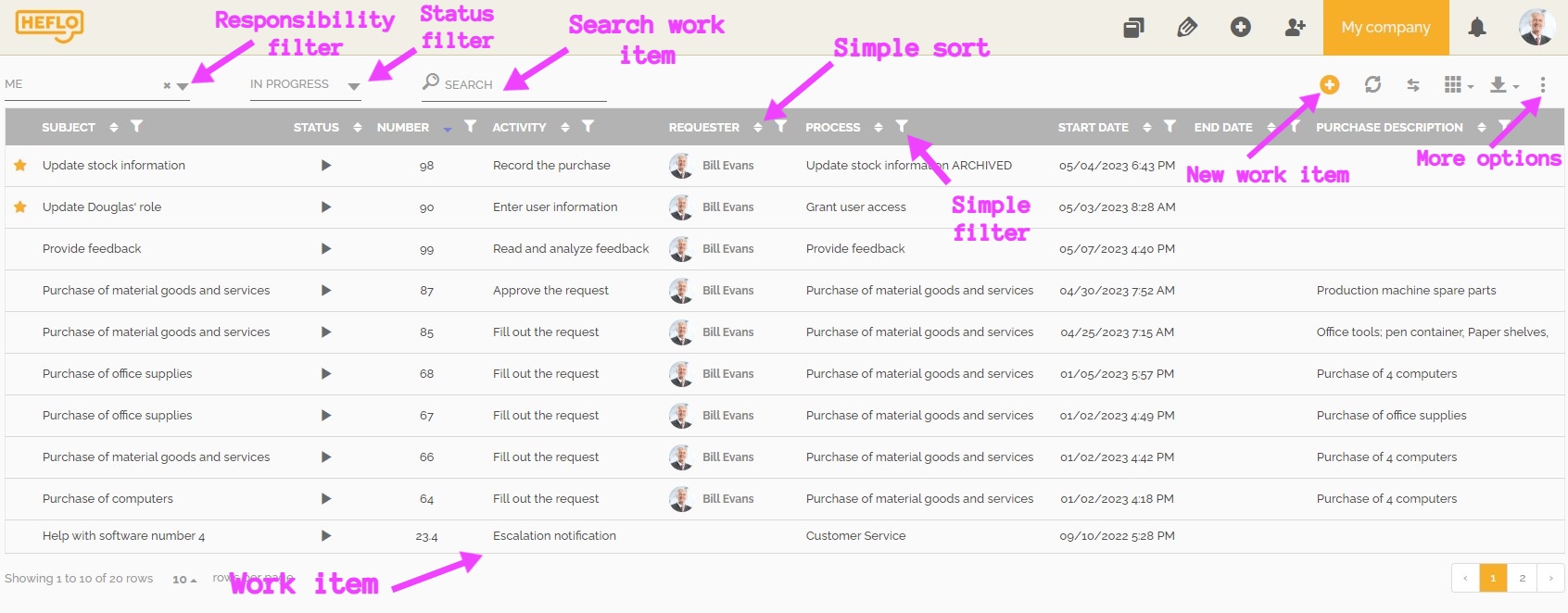
The list is available for users who have the “Administrator” and “User” role or a custom role which gives them access to the Workspace page. To learn more about roles : Roles on HEFLO.
To access the page just use the side menu as shown below:
Click on “Workspace” then on “Tasks”.

Textual search and basic filters
At the top of the task list you can change the main “Responsibility” and “Status” filters (click the “x” to remove the filter and it gives you all the items within your view). You can also search for items by typing in the “Search” field.
- In the 1st field, you can select the user whose tasks you want to see assigned to him.
- The 2nd field is the one that gives you the option to choose the status of the work items.
- All status: It will list all work items regardless of their status.
- In progress: It will list all work items that are open.
- Suspended: It will show the work items that are in draft phase.
- Finished: It will show the work items closed.
- The third field enables you to search for a work item by name or number.
At the top right of the page you will find:

-
 By clicking on this icon you can: manage groups, export data, find recently viewed items, do substitutions and reset layout.
By clicking on this icon you can: manage groups, export data, find recently viewed items, do substitutions and reset layout. - To learn more about manage groups feature: Groups.
- To learn more about the export data feature: Tutorial : Data Export.
- To learn more about recently viewed items: Access to recently viewed work items.
- To learn more about substitutions: Substitution of a user during an absence.
- To learn more about predifined layout for task list and meter widgets: User layout predifinition.
 To download the task list either on excel or word format.
To download the task list either on excel or word format.  To define the columns you want to appear in the list. Each selected field will create a column in the list.
To define the columns you want to appear in the list. Each selected field will create a column in the list.
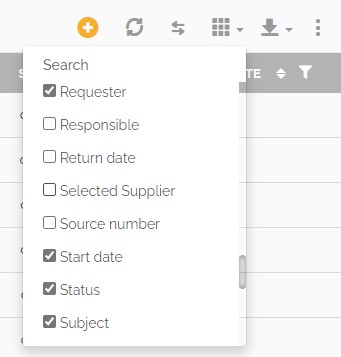
You can change the column sequence by clicking, holding and dragging the column to the desired position.

 To change the layout from list to grid and vice versa.
To change the layout from list to grid and vice versa. To refresh the task list information.
To refresh the task list information.  To create a new work item. Then click on the desired process name to create the item.
To create a new work item. Then click on the desired process name to create the item.
Editing a Work Item
To open the edit screen, double-click on the work item in the list.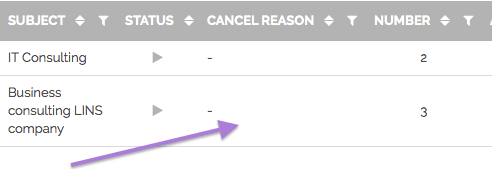
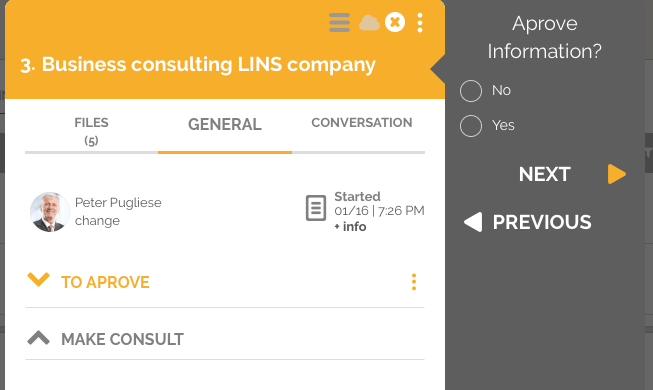
Set sorting and advanced filters
Natively the task list has 7 columns: Subject, Status, Number, Activity, Process, Start date and End date.
Click on the arrows to the right of the corresponding field to create a simple sort ascendingly or descendingly.

To add filters click the corresponding icon also to the right side of the column you want. Select the filter option.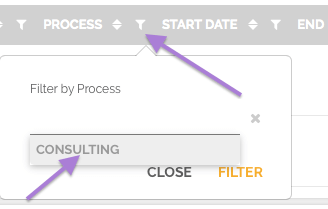
Then click on “Filter”.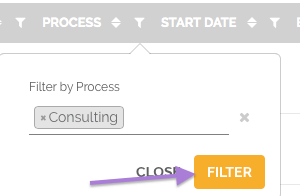
When clicking on this filter icon, you will be able to precise your search.
- Subject: Clicking on filter icon processes will be sorted by specific subject name.
- Status shows the icon of the process :
 this shows work items in progress,
this shows work items in progress, this shows finished work items,
this shows finished work items,  this shows canceled work items.
this shows canceled work items.
Clicking on the status, you will sort either from “in progress” to “finished” or the opposite.
- Number: Represents the work item number in this environment. Clicking on the two arrows will list the work items in ascending order, clicking again will list them in descending order. Clicking on the filter icon will then allow you to search for a specific work item.
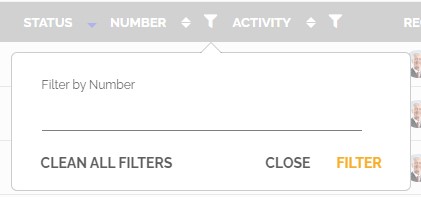
- Activity: This is the task the work item is in. You can sort by task, and also filter on specific tasks.

If you enable the “Exclude these items from result”, then HEFLO will list all work items except those that are in the selected activities. - Start date: You can sort by start date; in this case click on the icon of the two arrows. The system will then sort in ascending order, if you click again it will then sort in descending order. By clicking the filter icon, you can filter work items to show only those within a specific interval.

- End date: This follows the same logic explained for the “Start date” column.

- Process: This is the process to which the work items belong. You can sort alphabetically. You can also filter to show items belonging to a specific list of processes. If you set the “Exclude these items from result” option from “off” to “on”, then HEFLO will list all instances of all processes except those belonging to the selected processes.
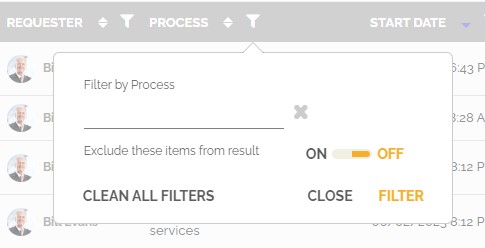
Click on “Filter” to do your search. Click on “Clear all filters” to go back to the default listing.
